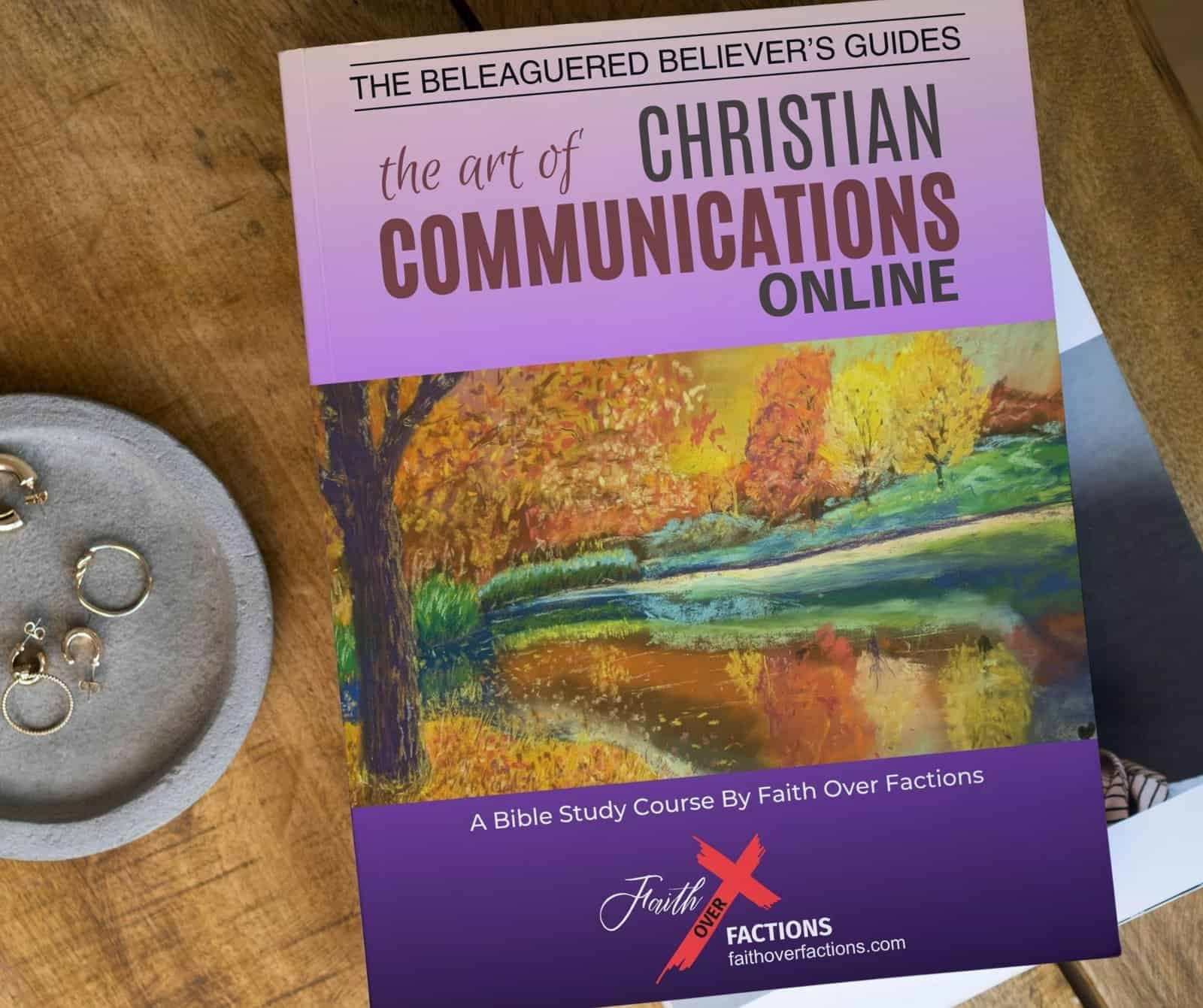When Silence Becomes a Sacred Space<
In a world that moves faster than our souls can follow, where every moment is filled with alerts, opinions, and obligations, how do we find our way back to God? When prayer becomes another task on our list—spoken quickly, anxiously, and distractedly—what happens to intimacy with the One who made us?
What if stillness is not an escape from reality, but the most courageous way to enter into it with God? Today’s reflection explores contemplative prayer—not as a technique to master, but as a sacred posture of presence. In the quiet, we do not lose ourselves. We find God.
Anchor in the Word
Key Verse
“Be still, and know that I am God! I will be honored by every nation. I will be honored throughout the world.
Psalm 46:10 (NLT)Key Scripture Context
These words are spoken during great upheaval—wars, shaking earth, and roaring waters. The psalm paints a vivid picture of nations in turmoil and natural forces unleashed, all echoing the chaos we often feel inside. Yet right in the middle of that storm, God doesn’t offer strategies or commands to fight back—He speaks a surprising, almost counterintuitive word: “Be still.”
This is not a passive whisper asking us to do nothing. It is a bold summons to stop striving, stop panicking, and trust that He is already in control. It’s a call to lay down our frantic grasp for certainty and let go into His presence. In a world that shouts for our attention, God invites us to know Him not in the clamor, but in the quiet. Knowing God begins not when we have all the answers, but when we learn how to stop and truly listen.
What We’re Facing
When the Soul Feels Distant
Our minds are saturated. We scroll through curated moments and curated outrage, all while longing for something real. The constant exposure to noise—both digital and emotional—leaves little room for stillness. Even in prayer, we often talk more than we listen—rattling off spiritual-sounding words, hoping to stir God’s attention, while our hearts drift elsewhere. The ache for closeness remains, unanswered. We crave presence, but we settle for performance.
But what if prayer is not about talking more, but dwelling deeper? What if the truest communion doesn’t come from effort, but from surrender? “Be still and know…” (Psalm 46:10) is not just an invitation to quiet the room. It’s a summons to quiet the soul. To trust that God meets us not when we pray perfectly, but when we are willing to simply be with Him in stillness.
E.M. Bounds, who wrote extensively on the life of prayer, once said, “To be little with God is to be little for God.”1 That line cuts to the heart of our struggle. We fill our lives with service, activity, even spiritual work—but without intimacy, our soul shrivels. As Bounds also observed, “Prayer is the contact of a living soul with God. In prayer, God stoops to kiss man, to bless him, and to aid him in everything that God can devise or man can need.”2 Without this contact, we burn out. With it, we are renewed—even in the silence.
Contemplative prayer offers us that contact. Not through eloquence, but through availability. Not through striving, but through stillness. It’s not the absence of thought—it’s the awareness of presence. In the quiet, we remember who we are—and more importantly, who God is.
Then and Now—Drawing Parallels
The early church understood the value of stillness—not as luxury, but as lifeline. In a world where following Jesus often meant persecution, exile, or death, many believers withdrew into literal wilderness places: deserts, caves, solitary cells. But these weren’t places of escape—they were places of encounter. The Desert Fathers and Mothers, early monastics from the 3rd and 4th centuries, saw silence not as absence but as attention. In their solitude, they discovered that to strip away the world was to come face-to-face with the Word.
Monastic traditions that emerged—like Lectio Divina, the “divine reading” of Scripture—were designed not for information, but transformation. These practices slowed the soul down enough to hear the Spirit’s whisper. As Abba Arsenius, one of the early desert monks, famously said, “I have often repented of having spoken, but never of having remained silent.”3 Silence was not empty—it was full of God.
Today, our wilderness looks different. It’s rarely physical exile—it’s spiritual erosion. We face inner chaos instead of outer persecution. The enemies of our soul are hurry, distraction, and endless noise. Burnout replaces martyrdom. Attention spans wither while anxieties multiply. Yet the ancient call still echoes across time: “Be still and know that I am God.” (Psalm 46:10)
E.M. Bounds reminds us, “The men who have done most for God in this world have been early on their knees. He who fritters away the early morning, its opportunity and freshness, in other pursuits than seeking God will make poor headway seeking Him the rest of the day.”4 Stillness is not a thing of the past. It is the gateway to strength in every age.
Contemplative prayer is how we reclaim that gateway. We may no longer live in caves—but we can cultivate interior caves of quiet where God meets us. It is in the silent places that eternal things are born.
Theological Truth in Plain Language
What Is Contemplative Prayer?
Contemplative prayer is the practice of resting attentively in God’s presence. It is not driven by speech, structure, or striving. Instead, it’s about being fully present with the One who already knows you completely and loves you infinitely. There is no performance to perfect. No productivity to measure. Just a surrendered heart meeting divine love.
In contemplative prayer, silence is not a void—it’s a sanctuary. It is where our spirit begins to breathe again. We are not seeking answers as much as we are consenting to God’s presence. In the quiet, our defenses drop, and trust takes root.
The Difficulty—and Beauty—of Stillness
This kind of prayer can feel unnatural at first. We are conditioned to achieve, to analyze, to speak. Sitting quietly in God’s presence may feel inefficient or even awkward. But over time, it forms us in ways that words alone cannot. As Mahatma Gandhi once said, “It is better in prayer to have a heart without words than words without a heart.”5 In contemplative prayer, we give our hearts—even when our words run dry.
E.M. Bounds puts it plainly: “Prayer should not be regarded as a duty which must be performed, but rather as a privilege to be enjoyed—a rare delight that is always revealing some new beauty.”6 Stillness is not absence—it is presence. It is in that very stillness that God often reveals the most.
The Heart Behind Psalm 46:10
To “be still and know that I am God” (Psalm 46:10) is more than a soothing phrase. It is an invitation to stop resisting, to stop striving, and to rest in the reality that God is God—and we are not. This verse is not spoken in a moment of peace, but in a moment of upheaval. And yet it offers a holy contradiction: in the chaos, be still. In the confusion, know.
Contemplative prayer is how we live this verse. Not by retreating from life, but by allowing God's presence to become the center of it. It is how we come to know—not merely intellectually, but relationally—that He is God.
Practical Moves of Faith
Define the Practice
Begin with just five or ten minutes. Find a posture that is both relaxed and attentive. Sit quietly, close your eyes, and simply rest in God’s presence. Don’t try to generate holy thoughts or manage your emotions. This isn’t about effort—it’s about availability. In contemplative prayer, even your silence becomes a sacred offering. As Romans 8:26 reminds us, “the Holy Spirit helps us in our weakness. For example, we don’t know what God wants us to pray for. But the Holy Spirit prays for us with groanings that cannot be expressed in words.” (Romans 8:26, NLT)
E.M. Bounds wrote, “Prayer must be a habit before it can be a passion. Prayer must be regular before it can be powerful.”7 This kind of stillness might not feel powerful at first—but over time, it carves space for deeper communion with God.
Create a Sacred Space
Choose a quiet corner in your home, or even a peaceful spot in nature. Light a candle, open a Bible, or keep a small cross nearby—not as ritual, but as reminder. Turn off your phone. Set a boundary around this time and space. Let your physical environment reflect the inward posture of reverence. As Jesus Himself often withdrew to “lonely places” to pray (Luke 5:16), so too can we withdraw from distraction to draw near to God.
Use a Breath Prayer
Breath prayers are simple phrases synchronized with your breathing, helping to anchor you in God’s presence. For example: Inhale: “Here I am.” Exhale: “You are God.”
Or: Inhale: “Abba, Father.” Exhale: “I rest in You.”
This gentle rhythm calms the nervous system and centers the soul. It echoes Psalm 131:2: “I have calmed and quieted myself, like a weaned child who no longer cries for its mother’s milk. Yes, like a weaned child is my soul within me.” (Psalm 131:2, NLT)
Let Go of Performance
This isn’t about praying “correctly.” There’s no gold star for silence done right. Contemplative prayer asks you to bring your honest, imperfect self before God and rest in the truth that He delights in you. You don’t have to say the right things—you simply have to be with Him.
As E.M. Bounds observed, “The goal of prayer is the ear of God. A mere form of prayer without communion with God is a delusion.”8 Contemplative prayer invites you out of the delusion of performance and into the reality of presence. God is not grading your silence—He’s inhabiting it.
Ask God for Stillness of Heart
Prayerfully invite God to meet you in your scatteredness. Speak a simple prayer: “Lord, teach me how to dwell in Your presence. Still my anxious thoughts. Make my heart a sanctuary of trust.” Let Psalm 62:5 guide you: “Let all that I am wait quietly before God, for my hope is in him.” (Psalm 62:5, NLT)
This is not a prayer to master, but a prayer to return to—again and again. Stillness isn’t the absence of activity—it’s the presence of trust. In these moments, you are learning to abide (John 15:4), and that is the truest form of prayer.
More Light for the Journey
- Lamentations 3:25-26 (NLT)
“The Lord is good to those who depend on him, to those who search for him. So it is good to wait quietly for salvation from the Lord.”
→ Trust doesn’t rush. God honors those who seek Him in stillness, not just urgency. Waiting quietly is not weakness—it’s faith in action. - 1 Kings 19:12 (NLT)
“And after the earthquake there was a fire—but the Lord was not in the fire. And after the fire there was the sound of a gentle whisper.”
→ God does not always reveal Himself in dramatic moments. Sometimes, His voice is found in the gentle silence. Contemplative prayer helps us tune in. - Isaiah 30:15 (NLT)
“This is what the Sovereign Lord says: Only in returning to me and resting in me will you be saved. In quietness and confidence is your strength.”
→ Strength doesn’t come from striving, but from resting in God’s care. Stillness becomes our sanctuary and source of confidence. - Luke 5:16 (NLT)
“But Jesus often withdrew to the wilderness for prayer.”
→ Even Jesus needed solitude. His habit of retreating shows us that spiritual clarity often begins with quiet disconnection from the noise.
Let’s Walk This Out Together
Contemplative prayer may feel unfamiliar—even frustrating—at first. In a culture built on instant results and constant noise, sitting in silence can feel like doing nothing. But over time, something sacred unfolds. We stop treating God like a distant authority we must convince, and begin experiencing Him as a loving presence who already knows and welcomes us.
This is not a quick fix for spiritual exhaustion. It’s a slow reawakening of the soul. One quiet moment at a time, we learn to trust that God is near, even when He seems silent. In the words of E.M. Bounds, “The men who have most fully illustrated Christ in their character, and have most powerfully affected the world for Him, have been men who spent so much time with God as to make it a notable feature of their lives.”9
Stillness is not passivity—it’s participation in the deepest kind of prayer: being fully present with the God who is already present with us.
Try it today. Carve out five minutes, ten minutes, or more. Turn off the distractions. Set aside the lists. Just sit—and let your heart say, “Here I am.” You may not hear anything. You may not feel anything. But in that space, something holy is happening: communion without striving.
We’d love to know how this practice unfolds for you. Share your experience in the comments below, or reflect on social media with the hashtag #StillWithGod. You’re not alone on this journey—we’re walking this quiet path together.
Journaling Prompts: From Noise to Knowing
- Where does the most noise show up in your life—externally or internally?
Is it the constant pressure to perform? The scrolling? The self-criticism? Name it. Naming the noise is the first step toward quieting it. What would it take to pause and meet God in that space instead? - How does the idea of silence with God make you feel?
Does it stir fear, restlessness, longing, resistance, or peace? Write honestly. There’s no “right” response. Let your reflection become a conversation with God. - What would change if you believed God delights in simply being with you?
Imagine prayer without performance—just presence. What would it look like to rest in that truth this week?
Footnotes
- E.M. Bounds, The Complete Works of E.M. Bounds on Prayer, “Power Through Prayer,” Chapter 1.
- E.M. Bounds, The Complete Works of E.M. Bounds on Prayer, “The Necessity of Prayer,” Chapter 1.
- Benedicta Ward, The Sayings of the Desert Fathers, “Arsenius,” Saying 5.
- E.M. Bounds, The Complete Works of E.M. Bounds on Prayer, “Power Through Prayer,” Chapter 2.
- Mahatma Gandhi, quoted in Robert Cardinal Sarah, The Power of Silence: Against the Dictatorship of Noise.
- E.M. Bounds, The Complete Works of E.M. Bounds on Prayer, “Purpose in Prayer,” Chapter 1.
- E.M. Bounds, The Complete Works of E.M. Bounds on Prayer, “The Reality of Prayer,” Chapter 5.
- E.M. Bounds, The Complete Works of E.M. Bounds on Prayer, “Power Through Prayer,” Chapter 8.
- E.M. Bounds, The Complete Works of E.M. Bounds on Prayer, “Power Through Prayer,” Chapter 3.






